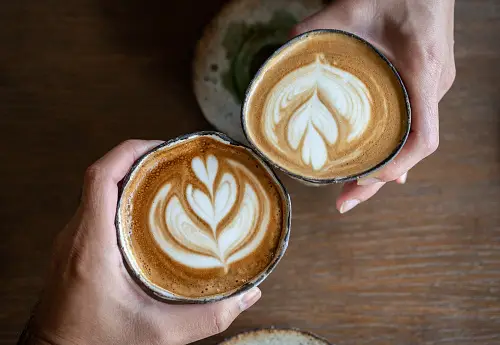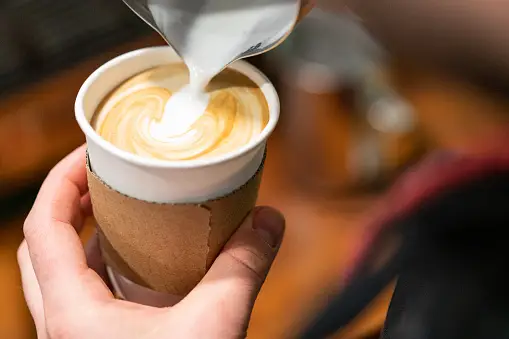“Cup of joe” is a common coffee nickname, but its origin is unclear. Unlike “java,” which refers to a specific region, “cup of joe” emerged in the 1930s. Various theories attempt to explain its sudden appearance.

When people talk about slang words for coffee, “cup of joe” usually comes up first. This term comes from America in the 20th century, around World War I and the early 1930s. We’re not exactly sure where it started, but there are several theories. Let’s explore some of the top ideas about where “cup of joe” came from and why it became popular all over America and eventually worldwide.
Martinson Coffee was Joe’s Coffee
Since Martinson Coffee owns the trademark for the word “cup of joe,” it is possible that the colloquial expression dates back to the company’s founding. Known locally for his outrageous antics, Joe Martinson founded the coffee shop in New York in 1898. The coffee was probably called “Joe’s coffee” or a “cup of joe” at the time. By the 1930s, this moniker might have gained traction and spread more broadly as Martinson Coffee grew.
Despite its decline in popularity, Martinson Coffee has a significant historical legacy. Andy Warhol famously featured the company’s cans in his artwork, and the brand even made an appearance in Mad Men in Season 2, Episode 7.

Josephus “Joe” Daniels Banned Alcohol on Ships
In 1914, Secretary of the Navy Josephus “Joe” Daniels forbade alcohol on board any ship in the United States Navy. As World War I approached, sailors discovered that their only viable beverage choice was coffee, also known as a “cup of joe.”
The theory’s detractors contend that since alcohol was not widely accessible on U.S. Navy ships at the time, the prohibition would not have had much of an effect in real life. But the prohibition would have been felt upon boarding dry ships by personnel used to drinking. Calling coffee a “cup of joe” would have been a subtly critical way to protest the prohibition without taking aim at Daniels.
Java + Mocha = Joe
According to linguists, “Joe” might be a shortened version of “Jamoke,” a popular 1930s moniker for coffee. The word “Jamoke” was a combination of the words “mocha” and “java.” It signifyies the two well-known growing locations and flavor profiles of coffee. During that time, coffee lovers began to use this word more frequently. As slang tends to change over time, “Jamoke” may have contracted over time, becoming the shorter and more practical “joe.” This theory provides a tenable explanation for the origin of the word “cup of joe,” positing a language transition from the longer and more complicated “Jamoke” to the concise and well-known “joe.”
The Average Man’s Drink
“Since ‘joe’ refers to an average man, ‘cup of joe’ could simply denote an ordinary person’s drink. This theory suggests that the term may have been perpetuated by everyday individuals, or ‘joes,’ particularly in the post-World War II era. As diners emerged in the 1940s and 50s, blue-collar workers who frequented these establishments for their daily meals might have commonly ordered ‘cups of joe.’
While the true origin of ‘cup of joe’ remains uncertain, these theories offer plausible explanations for its emergence. Regardless of its beginnings, the term has endured since its first recorded appearances in the 1930s and has only grown in popularity, particularly since the 1980s.”






